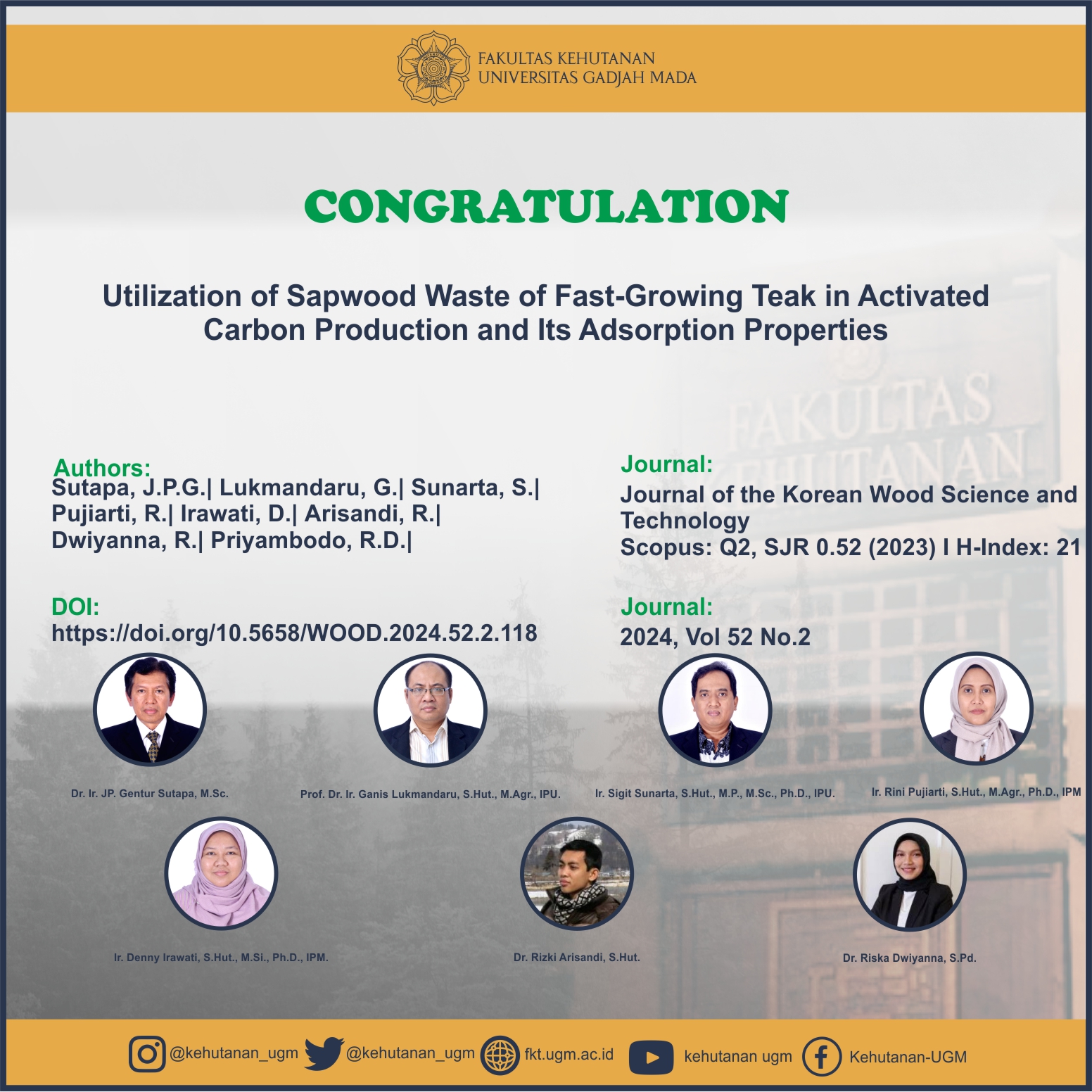
Abstract
The sapwood portion of fast-growing teak is mostly ignored due to its inferior quality. One of the possibilities for utilizing sapwood waste is to convert it into activated carbon that has good adsorption capabilities. The raw materials used in this research were sapwood of 14-year-old fast-growing teak sapwood (FTS) waste, which was taken from three trees from community forests in Wonosari, Gunungkidul, Yogyakarta Special Region. FTS waste was taken from the bottom of the tree up to a height of 1.3 m. The activation process is conducted with an activation temperature of 750°C, 850°C, and 950°C. The heating duration consists of three variations: 30 min, 60 min, and 90 min. The quality evaluation parameters of activated carbon include yield, moisture content, volatile matter content, ash content, fixed carbon content, adsorption capacity of benzene, adsorption capacity of methylene blue, and adsorption capacity of iodine. The results showed that the activated carbon produced had the following quality parameters: yield of 75.61%; moisture content of 1.27%; volatile matter content of 9.98%; ash content of 5.43%; fixed carbon content of 84.58%; benzene absorption capacity of 8.58%; methylene blue absorption capacity of 87.73 mg/g; and iodine adsorption capacity of 948.19 mg/g. It can be concluded that activated carbon from FTS waste has good iodine adsorption, which fulfilled the SNI 06-3730-1995 quality standard. Due to the iodine adsorption ability of FTS waste activated carbon, the conversion of FTS waste to activated carbon is categorized as a potential method to increase the value of this material.
SDGs:
1. SDGs 9:Industry, Innovation, and Infrastructure
2. SDGs 12:Responsible Consumption and Production
3. SDGs 13:Climate Action
4. SDGs 15:Life on Land
Link Dokumen:
Download
